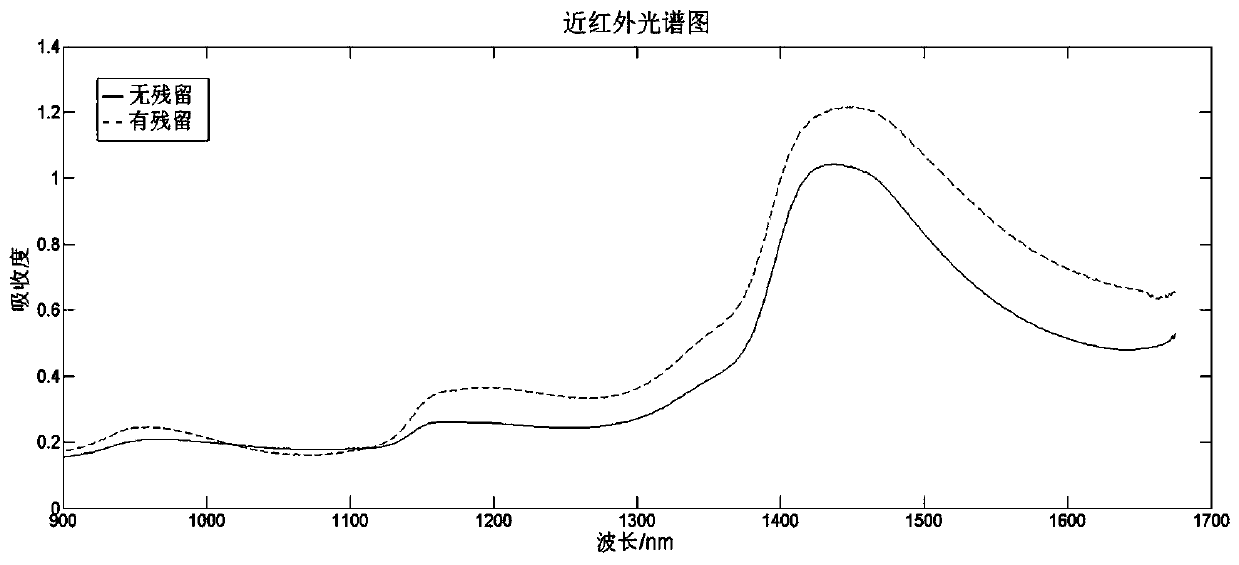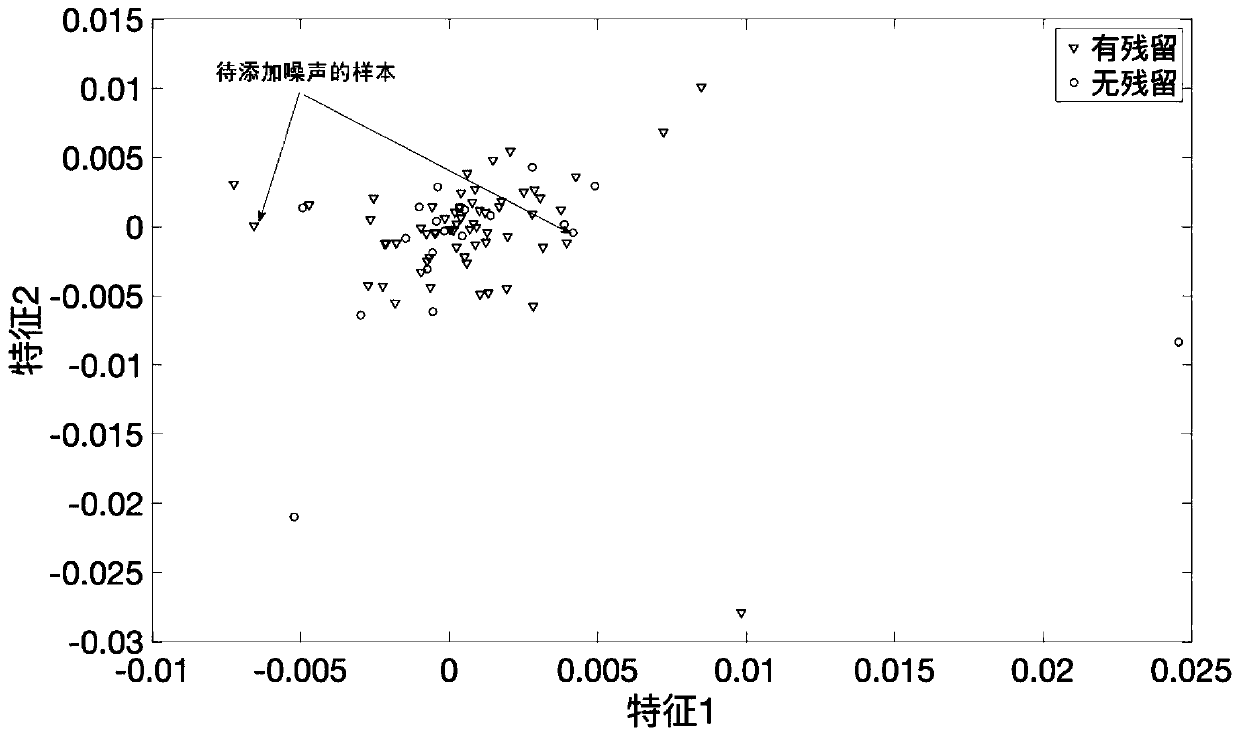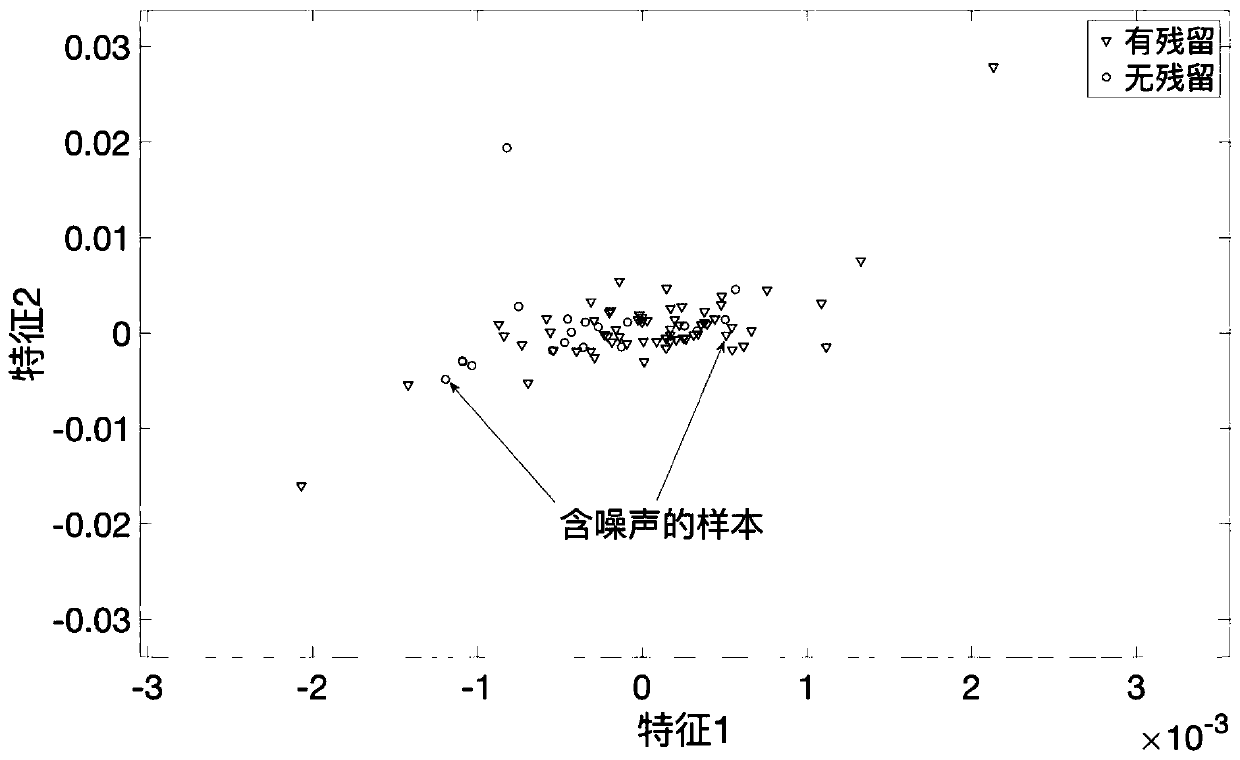Pesticide residue detection method based on near infrared spectrum data feature extraction
A pesticide residue detection and near-infrared spectroscopy technology, applied in measuring devices, material analysis by optical means, instruments, etc., can solve the final results affecting pesticide residue detection, chemical group absorption peak overlap, and data differences are small. and other problems to achieve the effect of improving classification accuracy and generalization ability, improving extractability, and improving separability.
- Summary
- Abstract
- Description
- Claims
- Application Information
AI Technical Summary
Problems solved by technology
Method used
Image
Examples
Embodiment 1
[0053] This embodiment provides a pesticide residue detection method based on near-infrared spectrum data feature extraction, which includes the following steps:
[0054] Step (1). Prepare a training sample set. The training sample set includes several fruits and vegetables with and without pesticide residues. Use the IAS-2000 near infrared spectrometer to collect the near-infrared spectra of the training samples;
[0055] Step (2), the second-order derivation of the near-infrared spectrum data of the sample in the sample data set obtained in step (1), processing the spectral data by the second-order derivative can amplify the signal of the original spectral data to a certain extent and eliminate the acquisition The background information contained in the spectral data makes the chemical groups in the original spectral data more prominent in the spectral peaks, which effectively improves the extractability of the features in the spectral data; the second derivative formula is as fol...
Embodiment 2
[0098] On the basis of Embodiment 1, the difference of Embodiment 2 is that the preparation methods of training samples and test samples are specifically as follows:
[0099] Step (1), select Shanghai greens purchased from the vegetable market as samples, and randomly select 80 leaves with uniform color, moderate leaf size, no damage to the leaves and no yellow edges;
[0100] Step (2). The pesticide used in this embodiment is dimethoate (C5H12NO3PS2), which is widely used in agricultural production, and the formulation is emulsifiable concentrate with a mass percentage of 40%, which is produced by Jiangsu Tenglong Biological Pharmaceutical Co., Ltd. Use distilled water to prepare pesticides into 30 solutions with an interval of 50 from 1:50 to 1:1500, and place them in 30 250ml volumetric flasks;
[0101] Step (3), first soak 80 leaves in soda water for about 5 minutes, then rinse them with clean water repeatedly, and place them in a ventilated place to dry naturally; then divide 60...
PUM
 Login to View More
Login to View More Abstract
Description
Claims
Application Information
 Login to View More
Login to View More - R&D
- Intellectual Property
- Life Sciences
- Materials
- Tech Scout
- Unparalleled Data Quality
- Higher Quality Content
- 60% Fewer Hallucinations
Browse by: Latest US Patents, China's latest patents, Technical Efficacy Thesaurus, Application Domain, Technology Topic, Popular Technical Reports.
© 2025 PatSnap. All rights reserved.Legal|Privacy policy|Modern Slavery Act Transparency Statement|Sitemap|About US| Contact US: help@patsnap.com



